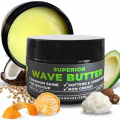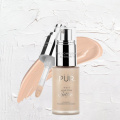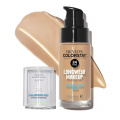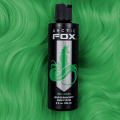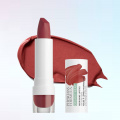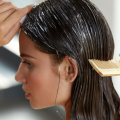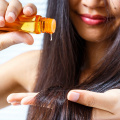Facial Dandruff Demystified: Causes, Symptoms, And Treatment
Unlock the secrets to banishing facial dandruff and embracing a clearer, more vibrant complexion. Empower your skin with effortless prevention and treatments.
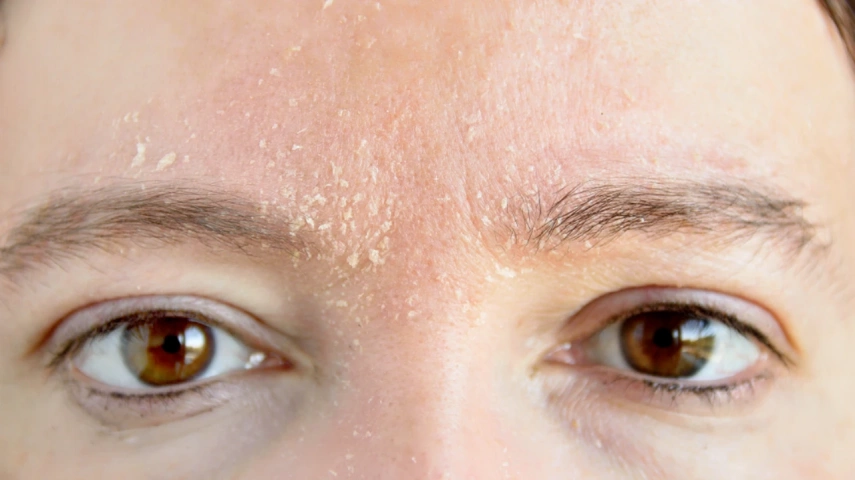
Seborrheic dermatitis, often known as face flaking or facial dandruff, is a prevalent skin disorder that affects many people globally. Dry, flaky skin on the face, particularly in places like the eyebrows, nose, and mouth region, is a defining feature of seborrheic dermatitis. Although the exact cause of face dandruff is unknown, Malassezia-related skin yeast proliferation is one of the contributing factors (1).
Face dandruff can occur for a number of reasons, like lifestyle changes or stress, which will also be discussed in detail in the article. Additionally, using harsh skincare products, washing your face too often, or having oily skin might cause it. Even though seborrheic dermatitis is not a serious medical issue, it can negatively impair people’s quality of life by lowering their self-esteem and limiting their skincare products (1).
Fortunately, the condition may be controlled and its symptoms reduced with efficient treatments.
What Is Facial Dandruff?
Facial dandruff, scientifically known as seborrheic dermatitis of the face, is a bothersome skin condition that affects countless individuals worldwide. While dandruff is typically associated with the scalp, its presence on the face can cause discomfort and embarrassment, making people self-conscious about their appearance (1).
When seborrheic dermatitis rears its flaky head, it manifests as dry, scaly skin on the face, particularly in regions such as the eyebrows, around the nose, and near the mouth. These pesky flakes can vary in size and are often accompanied by telltale signs of irritation, including redness and itching. The exact cause of this condition remains somewhat elusive, but researchers believe it may be linked to an overgrowth of yeast called Malassezia, which naturally resides on our skin.
A variety of factors contribute to the development of facial dandruff. Hormonal imbalances and stress are two of them. While this is just an acute medical condition, it could often lead to heavy itching and embarrassment in public.
What Causes Seborrheic Dermatitis on the Face?
Liis Hainla, Editor-in-Chief of Vegan Avenue and our contributor, explains seborrheic dermatitis shows early signs like red or pink patches in oily areas like the scalp, face, and eyebrows. Flakiness and greasy, white, or yellowish flakes may appear, often confused with dandruff. Itching and irritation may accompany the condition, leading to scratching and potential infections. Symptoms can vary in severity and come and go in cycles.
Seborrheic dermatitis on the face, a condition characterized by dry patches of flaky skin and irritation, can be attributed to various underlying causes. This mysterious skin ailment arises from complex reasons, unveiling a captivating web of triggers. Below are some common causes of seborrheic dermatitis on the face:
1. Malassezia
One influential factor contributing to seborrheic dermatitis on the face is the overgrowth of a yeast known as Malassezia, which normally resides on the skin. This stubborn yeast, when it multiplies excessively, disrupts the pH of the skin, sparking an inflammatory response. While the exact ways in which Malassezia causes problems are questionable, its connection to seborrheic dermatitis is established (2).
2. Hormonal Imbalance
The puzzling nature of seborrheic dermatitis extends beyond one factor. Hormonal imbalances, a proverbial tightrope walk of chemical messengers within the body, can disturb the equilibrium of the skin and provoke flare-ups of this irksome condition. Our contributor Liis Hainla states that facial dandruff, also known as seborrheic dermatitis, can be linked to a yeast infection, particularly an overgrowth of Malassezia yeast on the skin. However, it's not the sole cause, as genetics, hormones, and environmental factors play a role too.
3. Stress

Stress, which is capable of harming our health, has also been implicated as a reason for seborrheic dermatitis on the face (3).
4. Environmental Factors
Environmental elements and weather fluctuations, those changeable companions of our daily lives, may also trigger facial seborrheic dermatitis. Harsh climates, extreme temperatures, and high humidity levels can all conspire against the balance of our skin, unleashing an onslaught of symptoms (3).
5. Medical Conditions
Certain medical conditions, such as Parkinson's disease, the human immunodeficiency virus (HIV), and certain psychiatric disorders, have been found to correlate with an increased likelihood of developing seborrheic dermatitis on the face (4). Our contributor Liis Hainla states that facial dandruff, also known as seborrheic dermatitis, can be linked to a yeast infection, particularly an overgrowth of Malassezia yeast on the skin. However, it's not the sole cause, as genetics, hormones, and environmental factors play a role too.
6. Unhealthy Skin Care Practices
Intriguingly, our own skin type and skincare practices can play a pivotal role in the emergence of facial seborrheic dermatitis. Individuals with oily skin are more susceptible to this condition, as the excess sebum produced by their sebaceous glands provides an ideal breeding ground for Malassezia. Furthermore, the use of aggressive skin care products, excessive facial washing, and the prolonged application of occlusive cosmetics can disrupt the skin's natural barrier, leaving it vulnerable to the onslaught of seborrheic dermatitis.
By understanding facial seborrheic dermatitis, we can adopt a more knowledgeable approach to preventing and managing it, thereby restoring skin harmony and boosting our confidence.
Symptoms of Facial Dandruff
The symptoms of seborrheic dermatitis on the face vary between people. However, common symptoms include:
1. Redness
The affected areas of the face may appear yellowish at first, but once you start scratching, the area may appear red or have a pinkish hue (1).
2. Flaky Or Scaly Skin
The skin on the face may develop flakes or scales, similar to dandruff on the scalp. These flakes are often white or yellowish in color (1).
3. Itching
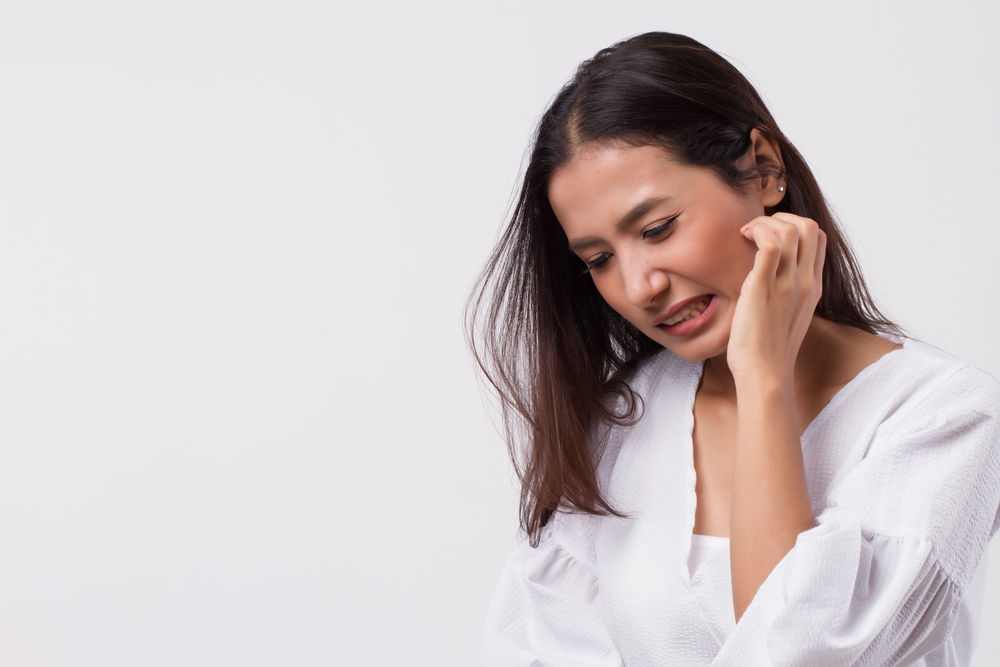
The affected skin can be itchy, causing discomfort and a desire to scratch (1).
4. Dryness
The skin may feel dry or tight, especially in areas where dandruff is present (1).
5. Greasy Or Oily Patches
Some individuals with face dandruff may experience greasy yellowish patches on their skin, particularly in the T-zone area (forehead, nose, and chin) (1).
6. Burning Or Stinging Sensation
In some cases, the affected skin may feel irritated and exhibit a burning or stinging sensation (1).
7. Swelling
In more severe cases, there may be mild swelling or inflammation in the affected areas (1).
Risk factors for Facial Dandruff
There are higher chances of you being susceptible to facial dandruff if you fall into the following categories.
- Age: It is more common in adults, particularly those above the age of 50 (2).
- Gender: Men are more likely than women to develop facial dandruff (5).
- Oily Skin: Excessive oil production in the skin, often referred to as seborrhea, can contribute to the development of the condition (6).
- Hormonal Changes: This has to be one of the most affecting factors as during puberty and pregnancy the hormones go completely in a different direction than the body is used to and it affects the skin too (1).
- Stress: High levels of stress or emotional distress can exacerbate seborrheic dermatitis symptoms, including facial dandruff (7).
- Climate And Season: Seborrheic dermatitis on the face may worsen in cold and dry weather conditions (8).
- Certain Medical Conditions: People suffering from medical conditions like Parkinson’s disease, HIV, or any neurological symptoms are more prone to develop facial dandruff (9).
- Genetic Predisposition: There may be a genetic component to seborrheic dermatitis, with a higher risk in individuals with a family history of the condition (10).
Ways to Treat Facial Dandruff
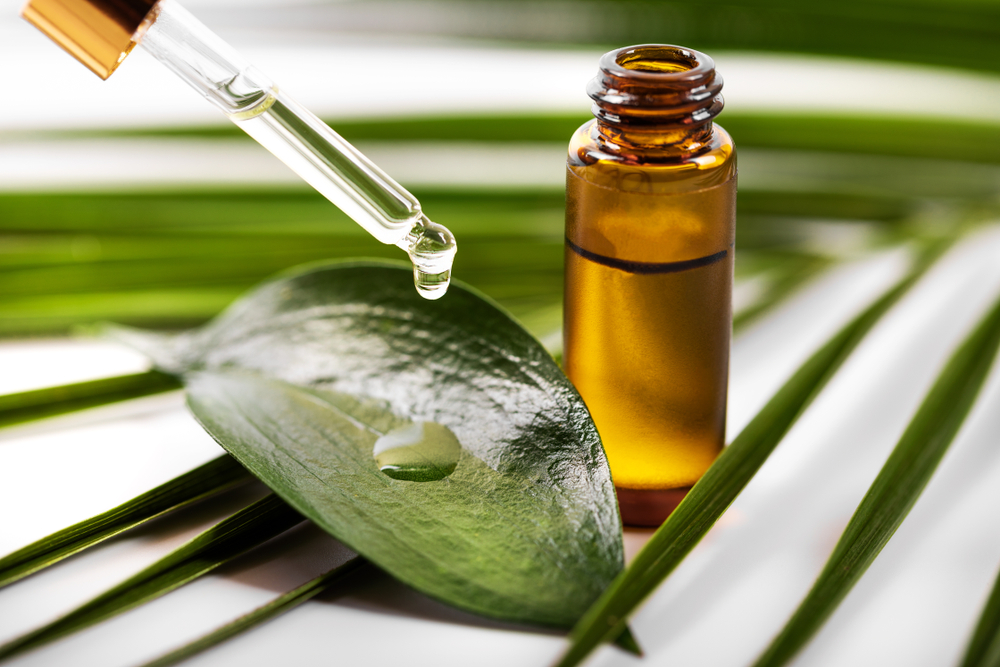
Seborrheic dermatitis treatment for the face aims to reduce inflammation, control flaking, and manage ongoing symptoms. These are some of the most common treatment options available.
1. Topical Antifungal Creams Or Ointments
The anti-fungal ointments work best as they contain ketoconazole, selenium sulfide, or ciclopirox, which can help reduce the growth of the yeast Malassezia. They are typically applied to the affected areas of the face and should be considered first by a healthcare professional (11).
2. Topical Corticosteroids
These medications help to reduce inflammation and itching. They are available in various doses and are applied sparingly to the affected areas under medical supervision (12).
3. Tea Tree Oil
Antifungal properties of tea tree oil can help reduce facial dandruff caused by Malassezia. Apply a few drops of diluted tea tree oil to the affected areas using a cotton ball. However, tea tree oil can be irritating to some individuals, so perform a patch test first and discontinue use if any adverse reactions occur (13). According to Dr. Aanchal Panth, a Dermatologist and Hair Plant Surgeon, “Applying tea tree oil for facial dandruff doesn't really work, but one or two drops of diluted oil can be used on affected areas at night to soothe the skin.”
4. Apple Cider Vinegar
Diluted apple cider vinegar can help restore the pH balance of the skin and reduce yeast growth. Mix equal parts of apple cider vinegar and water, apply it to the affected areas using a cotton ball, and leave it on for a few minutes before rinsing. Avoid using undiluted apple cider vinegar, as it may cause irritation (14).
5. Aloe Vera
Aloe vera gel has soothing and moisturizing properties. Applying pure aloe vera gel to the affected areas may help reduce inflammation and itching. Leave it on for a few minutes before rinsing (15).
Dr. Aanchal Panth says, “While aloe vera gel might not help treat facial dandruff directly, it can help soothe the skin and keep it nourished.”
6. Coconut Oil
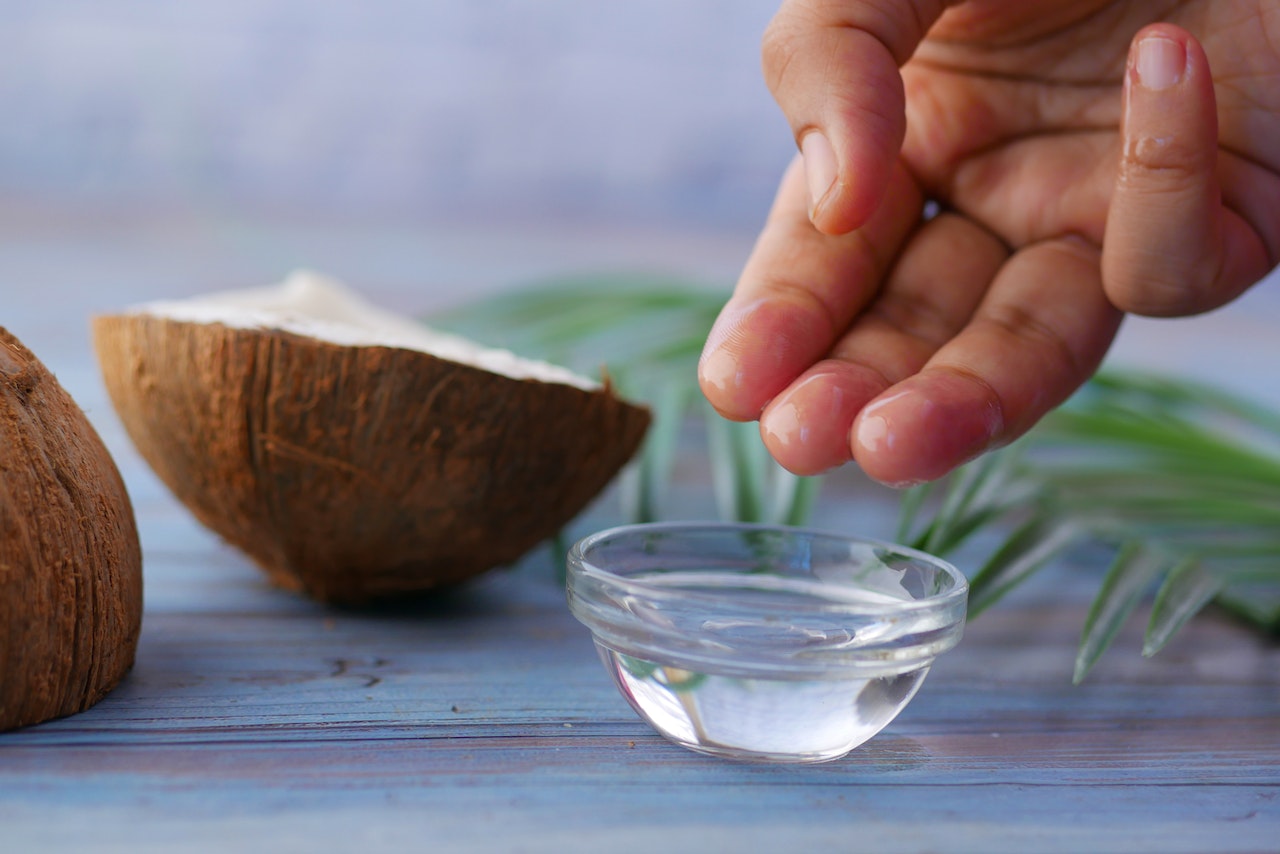
Coconut oil can be used to moisturize your skin. It helps reduce the dry flakiness caused by dandruff. You may leave it on for a few hours or overnight, and then gently wash it off (16).
7. Oatmeal
Oatmeal has calming properties and can help relieve itching. Make a paste by mixing colloidal oatmeal with water and applying it to the affected areas for about 15 minutes before rinsing it off (17).
8. Salicylic Acid
Using toners with salicylic acid can help get rid of dead skin cells and prevent dandruff-related issues (18).
How to Prevent Facial Dandruff?
While facial dandruff is not necessarily caused by poor hygiene, this is definitely one of the causes. Looking at the causes of the disease, maintaining moisture, and focusing on keeping away the dirt are the keys to balancing the skin's pH. Here are a few ways to prevent facial dandruff:
1. Gentle Cleansing
Use a gentle, fragrance-free cleanser to wash your face twice a day. Avoid harsh scrubbing, as it can irritate the skin and potentially worsen dandruff symptoms.
2. Use Lukewarm Water
Hot water can strip the skin of its natural oils, leading to dryness and potential flaking. Opt for lukewarm water when washing your face to maintain the skin's moisture balance.
3. Avoid Extreme Weather Conditions
Cold and dry weather can worsen the symptoms. Protect your face by wearing a scarf or hat in cold weather, and use a humidifier indoors to add moisture to the air.
4. Follow a Healthy Lifestyle

Follow a balanced diet, stay hydrated, get regular exercise, and ensure you get enough sleep. A healthy lifestyle can contribute to overall skin health.
5. Avoid Triggers
Identify and avoid any triggers that worsen your condition, for example, an oily scalp.
6. Regularly Clean Personal Items
Cleanse items that come into contact with your face, such as makeup brushes, pillowcases, and hats, to minimize the buildup of oil, dead skin cells, and potential irritants.
Conclusion
In a nutshell, the key to preventing facial dandruff is maintaining proper hygiene and a healthy lifestyle. Seborrheic dermatitis is an itchy, dry, and flaky skin condition that sometimes also forms a yellowish, greasy layer on the skin. It may be caused by many other reasons apart from yeast infection or Malassezia; environmental and genetic factors are also factors to consider. Many times, dandruff on the face can be treated with home remedies like coconut oil application or with the antifungal properties of tea tree oil. In severe conditions, one might have to pay a doctor's visit and get it treated.
Preventing it involves maintaining some basic lifestyle hygiene practices, like washing your face with a gentler cleanser twice a day and keeping hand towels and pillowcases clean.
Having said that, it's important to note that dandruff on the face can vary in its presentation and treatment effectiveness for different individuals. Consulting a dermatologist is crucial for an accurate diagnosis, a personalized treatment plan, and the ongoing management of dandruff. With the right approach, individuals can effectively manage the severity, restore skin harmony, and boost their confidence.
Contributor: Liis Hainla, Editor-in-Chief, Vegan Avenue
ALSO READ: What Is Wet Dandruff? Here’s a Breakdown of Its Causes, Treatment, And Prevention





 JOIN OUR WHATSAPP CHANNEL
JOIN OUR WHATSAPP CHANNEL



































